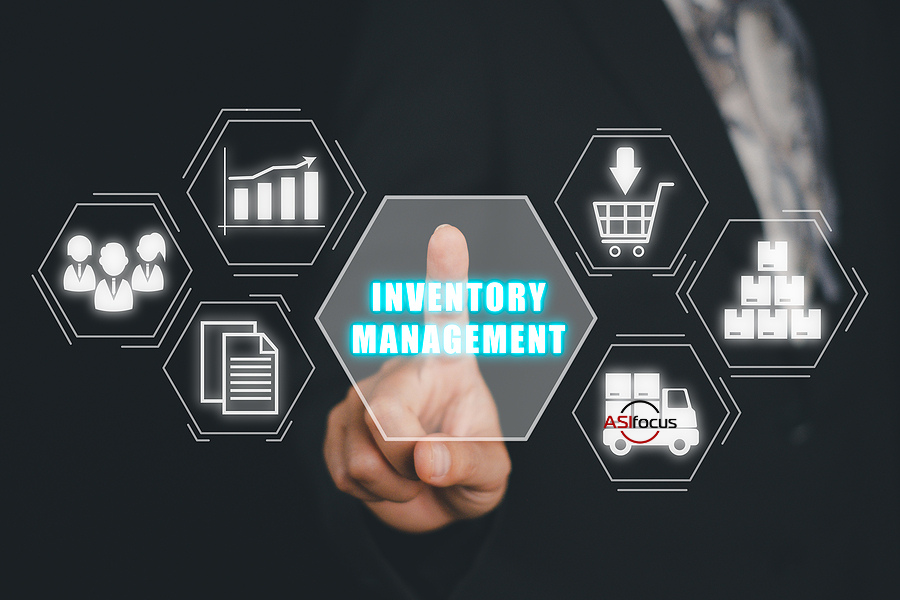If you run a retail, distribution, or manufacturing business, you already know how crucial inventory management is to keeping things running smoothly. Your inventory isn’t just a collection of items—it’s the heartbeat of your operations. And whether you’re tracking pallets in a warehouse or individual products on shelves, keeping the right balance of stock is no easy task.
Think about all the things you have to consider every day:
- Do we have enough of Item A to meet demand?
- Where exactly is Item B stored?
- Is Item C still moving or sitting idle?
Now, imagine trying to make smart decisions around stocking and purchasing without knowing how efficiently your inventory is being used. That’s where the Inventory Turnover Ratio comes into play. It’s a simple metric on the surface, but it gives you big insights into how your business is performing.
What Exactly Is the Inventory Turnover Ratio?
In plain terms, your Inventory Turnover Ratio tells you how many times you sell and replace your inventory over a certain period—usually a year.
Here’s a quick example:
Let’s say you own a grocery store. You order a shipment of orange juice, customers buy that juice, and then you reorder more to restock. That’s one complete turnover cycle. The Inventory Turnover Ratio counts how many times that cycle happens during your timeframe.
But, of course, real life isn’t quite that straightforward. Maybe demand spikes unexpectedly, or maybe a shipment gets delayed. Maybe a new competitor opens down the street. All of these factors can affect how often you’re able to turn your inventory.
And why does this matter? Because turnover directly reflects how efficiently you’re running your inventory. If your turnover ratio is too low, it might mean products are sitting on shelves too long—possibly tying up cash and taking up space. On the flip side, a super high ratio could mean you’re selling out too quickly and not keeping enough stock on hand to meet demand.
According to Investopedia, a low turnover can be a sign of sluggish sales or overstocking, while a high ratio can point to strong sales—but potentially inadequate stock levels. The goal is to find the sweet spot where you’re selling through inventory efficiently without losing sales or wasting space.
Is a High or Low Turnover Ratio Better?
That really depends on what kind of business you’re in.
If you sell items that are perishable or that customers expect to buy frequently—like groceries, flowers, or trendy apparel—you want a higher turnover ratio. You need to move stock quickly to avoid spoilage or going out of style.
On the other hand, if you’re selling higher-ticket or durable items—say, jewelry, furniture, or vehicles—you’ll naturally have a lower turnover ratio. Those items take longer to sell, and customers don’t buy them often. That’s completely normal.
So, while the Inventory Turnover Ratio is a valuable metric, it’s not one-size-fits-all. It needs to be viewed through the lens of your industry, your product type, and your customers’ buying behavior.
Improving Inventory Turnover: It’s Not Just About the Numbers
While it’s helpful to know how often your inventory is turning over, the number alone won’t tell you everything. A ratio can tell you something’s up, but it won’t tell you why it’s happening or what you should do about it.
That’s why the real value comes from going deeper. You need to regularly review your inventory processes—how you’re forecasting demand, how you’re managing stock levels, and how you’re planning purchases. It’s an ongoing process that requires attention to detail and, ideally, the right technology to support you.
Trying to manage all of this manually? That can get overwhelming fast. Mistakes are easy to make, and even small inefficiencies can add up. Fortunately, this is exactly where tech tools like Enterprise Resource Planning (ERP) systems come in handy.
How Technology Can Help: Automate, Streamline, and Scale
With a modern ERP solution—especially one with strong Inventory Management capabilities—you can automate a lot of the grunt work, including inventory turnover calculations.
But that’s just the beginning. A robust ERP system helps you:
- Forecast demand more accurately so you’re ordering based on real data, not guesswork.
- Use Just-in-Time (JIT) inventory techniques to minimize excess stock while still meeting customer demand.
- Analyze your SKU performance, so you know which products are driving profits—and which might be worth retiring.
- Identify dead stock that’s taking up space and costing you money.
- Classify items using ABC codes, which help prioritize your inventory based on value and importance to your business.
All of this leads to better decisions, more efficient operations, and healthier cash flow.
Inventory Management with Acumatica
If you’re looking for a solution that helps you manage inventory smarter, Acumatica Cloud ERP might be worth a look.
Acumatica’s Inventory Management Solution gives you centralized control over your inventory—across all locations. You can automate purchase orders, streamline your workflows, and track items and costs in real time. With better visibility, you can increase inventory turnovers, avoid stockouts, and stay ahead of customer demand.
Some key benefits include:
- Better accuracy in forecasting and replenishment
- Fewer dead-stock issues
- Tools to analyze profitability by item, product class, or family
- Real-time insights that help you make faster, more confident decisions
At the end of the day, understanding and improving your Inventory Turnover Ratio is about more than just math—it’s about having the tools and insights you need to run your business better.
Inventory management is always going to be complex. But it doesn’t have to be chaotic. By keeping an eye on your Inventory Turnover Ratio and using modern tools to automate and optimize your processes, you can keep your shelves stocked just right—and your customers happy. Contact us or schedule your free consultation today to get started with Acumatica or to learn more.

